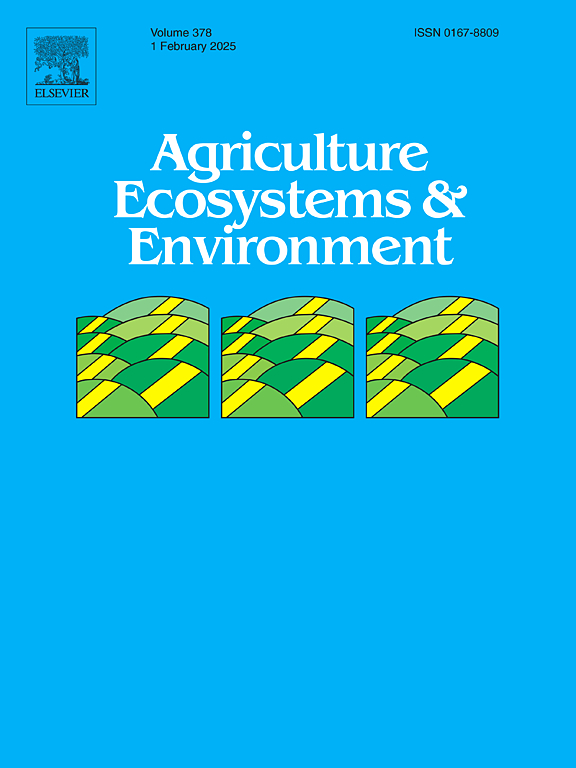Comprehensive assessment of soil health in representative kiwifruit orchards in southwest China
IF 6
1区 农林科学
Q1 AGRICULTURE, MULTIDISCIPLINARY
引用次数: 0
Abstract
Improving soil health is important for sustainable agriculture. However, inappropriate soil management threatens soil quality, potentially reducing crop yield and compromising other soil functions. Assessment of soil health, identification and amelioration of the soil constraining factors to improve crop yields are important for the long-term benefits. However, few studies on soil health in perennial cash crops have been conducted. In this study, intensive soil sampling was conducted at soil depths of 0–30, 30–60 and 60–90 cm in kiwifruit orchards with high yield (HY; average 25.9 t ha−1) and low yield (LY; average 7.0 t ha−1) in adjoining field sites to assess soil health and multifunctionality, and identify the major factors limiting yields. Additionally, a field experiment was conducted to test the effect of localized application of sand on amelioration of soil physical parameters for improving yield. Soil physical properties, but not chemical or biological properties, differed between HY and LY orchards. Soil porosity and aeration porosity at 0–30 cm deep in HY orchards were higher than in LY orchards. In contrast, soil bulk density and surface hardness had the opposite trends. Soil health and multifunctionality indices were the highest at 0–30 cm deep, but did not differ significantly between HY and LY orchards regardless of soil depth. Soil physical health indicator at 0–30 and 30–60 cm deep was higher (24 % and 32 %, respectively) in HY orchards than in LY orchards. The structural equation model indicated that soil surface hardness, bulk density and soil aeration porosity were major physical factors constraining kiwifruit yield. Soil porosity, root length density and kiwifruit yield were increased in the localized sand application treatment. These results indicate that soil health testing is a prerequisite prior to the establishment of orchards. The remediation of soil physical traits is important for optimizing kiwifruit yield in soils with high clay contents or compacted soil with high bulk density.
求助全文
约1分钟内获得全文
求助全文
来源期刊

Agriculture, Ecosystems & Environment
环境科学-环境科学
CiteScore
11.70
自引率
9.10%
发文量
392
审稿时长
26 days
期刊介绍:
Agriculture, Ecosystems and Environment publishes scientific articles dealing with the interface between agroecosystems and the natural environment, specifically how agriculture influences the environment and how changes in that environment impact agroecosystems. Preference is given to papers from experimental and observational research at the field, system or landscape level, from studies that enhance our understanding of processes using data-based biophysical modelling, and papers that bridge scientific disciplines and integrate knowledge. All papers should be placed in an international or wide comparative context.
 求助内容:
求助内容: 应助结果提醒方式:
应助结果提醒方式:


